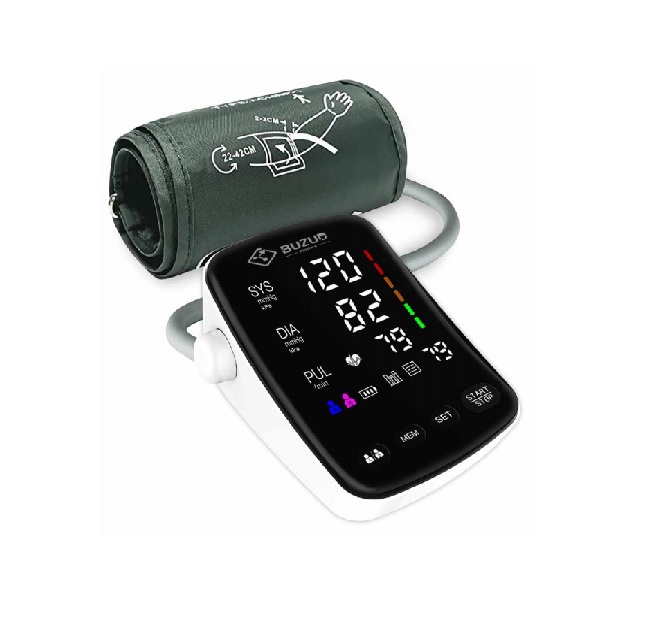
Understanding Blood Pressure Readings: What Do the Numbers Mean?
Blood pressure readings are a crucial indicator of heart health, providing insight into how well your cardiovascular system is functioning. Your cardiovascular system, comprising the heart and blood vessels, is vital for circulating blood, supplying oxygen and nutrients, and removing waste. Key indicators of cardiovascular health include blood pressure, heart rate, cholesterol levels, and blood glucose levels. High blood pressure and cholesterol can signal a heightened risk of heart disease and stroke. Regular monitoring through diagnostic tests like ECGs, echocardiograms, stress tests, and coronary calcium scans can detect potential issues early, ensuring timely intervention and management.
Understanding these readings can help you take proactive steps to maintain a healthy heart and prevent potential health issues. This article will break down the components of blood pressure readings, explain their significance, and offer tips on maintaining healthy levels.
The Basics: Systolic and Diastolic Numbers
Blood pressure is measured using two numbers: systolic and diastolic.
- Systolic Pressure (Top Number): This measures the pressure in your arteries when your heart beats. It indicates how much pressure your blood is exerting against your artery walls during heartbeats. A higher systolic number can be a sign that the heart is working harder than it should to pump blood.
- Diastolic Pressure (Bottom Number): This measures the pressure in your arteries when your heart is resting between beats. It indicates the resistance to blood flow in the blood vessels. A higher diastolic number can indicate that the blood vessels are less flexible or are experiencing increased resistance.
Understanding Normal and Abnormal Ranges
Blood pressure is categorised into different ranges:
- Normal Blood Pressure: A reading of less than 120/80 mmHg is considered normal. This indicates that your heart is pumping efficiently, and your arteries are not under excessive strain.
- Elevated Blood Pressure: A systolic reading between 120-129 mmHg and a diastolic reading less than 80 mmHg indicates elevated blood pressure. While not yet hypertensive, this range can progress to hypertension without lifestyle changes.
- Hypertension Stage 1: Systolic readings of 130-139 mmHg or diastolic readings of 80-89 mmHg indicate stage 1 hypertension. This stage requires lifestyle modifications and possibly medication to prevent complications.
- Hypertension Stage 2: Systolic readings of 140 mmHg or higher, or diastolic readings of 90 mmHg or higher, indicate stage 2 hypertension. This stage often requires medication and close monitoring by a healthcare provider.
- Hypertensive Crisis: Systolic readings over 180 mmHg or diastolic readings over 120 mmHg require immediate medical attention. This is a severe condition that can lead to organ damage or other critical health issues.

Image by jcomp on Freepik
Potential Health Risks
High blood pressure, or hypertension, can lead to several serious health problems, including:
- Heart Disease: Hypertension can cause the arteries to harden and thicken, leading to atherosclerosis, which increases the risk of heart attack and stroke.
- Kidney Damage: High blood pressure can damage the blood vessels in the kidneys, affecting their ability to filter waste from the blood.
- Vision Loss: Hypertension can damage the blood vessels in the eyes, leading to vision problems or blindness.
- Cognitive Decline: High blood pressure can affect the blood flow to the brain, leading to cognitive issues and increasing the risk of dementia.
Understanding blood pressure readings is essential for maintaining heart health and preventing serious health complications. By recognising the significance of systolic and diastolic numbers and knowing the normal ranges, you can take proactive steps to manage your blood pressure. Adopting a healthy lifestyle, including a balanced diet, regular exercise, and stress management, can help you maintain optimal blood pressure levels and improve your overall well-being. Always consult with your healthcare provider for personalised advice and treatment options.
Introducing the BUZUD blood pressure monitor, designed to provide accurate and reliable blood pressure readings, helping you take control of your heart health. Engineered with advanced technology and user-friendly features, the BUZUD blood pressure monitor ensures precise measurements with ease of use, making it an essential tool for anyone looking to monitor their cardiovascular health regularly. With its sleek design, clear display, and convenient functionality, this monitor offers a seamless experience, empowering you to track your blood pressure and make informed decisions about your health. Whether you are managing hypertension or simply keeping an eye on your heart health, the BUZUD blood pressure monitor is your trusted companion in achieving a healthier lifestyle.
DISCLAIMER
All information presented herein serves as a general guideline, and is not intended as dispensing any medical advice(s). User(s) should consult their doctor to seek further clarification for any doubt. It is recommended to refer to this guide with sole discretion, thereby we shall not be held responsible for any part of the information as presented.
REimagined Healthcare with BUZUD Care Experience at:
585 North Bridge Road, #01-02 Raffles Hospital, Singapore 188770
Call: +65 6518 9959 or Email: customercare@BUZUD.com
No Comments
Leave a Reply
You must be logged in to post a comment.
